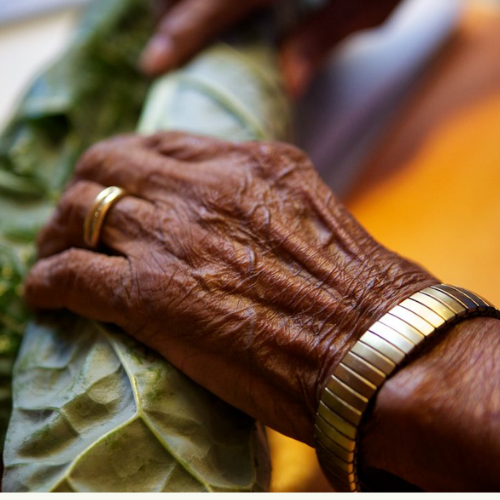
When loved ones die, they take more than their bodies with them. They also take away the things we loved to share. When I lost my grandmother in 2018. I didn’t know losing her meant I’d never get to eat her signature corn moi-moi again.
I didn’t even realise four years had passed since I’d eaten one until I took a trip to see my grandfather during 2022’s Eid Mubarak. Stepping into the family house for the first time in a long while, reminded me that death takes a lot more than the people we love. It also takes away from the special food we used to love watching them make.
When my grandma was alive, she’d welcome me with piping hot Jollof rice cooked with firewood in her open hearth — a place no one uses anymore, and another relic of my grandmother’s death. The following day, she’d serve me boiled yam and odoro (palm oil sauce) in the mornings. Lunch was her signature corn moi-moi made with corn from my grandpa’s farm.
RELATED: 12 Extremely Specific Things Every Nigerian Grandma Owns
Now that it’s just my grandpa at home, it’s a miracle if I even see boiled white rice. All he eats these days is wheat swallow and vegetable soup prepared that the househelp prepares.
It’s not like my grandma had a secret recipe she hid away before she died. But corn moi-moi was one of those things only she had the dedication to make. She left behind six daughters, but none of them ever attempted to make it. As a child, corn moi-moi was something I only got when our family visited the village or when grandma sent us a package. I always hated having to wait so long. But it never occurred to me how difficult it was to peel off the corn seeds from each cob and turn them into moi-moi. All I did was eat.
RELATED: Okpa is Much More Than Food in Enugu, It’s Tradition
I never watched my grandma make corn moi-moi. But after the trip to see my grandpa over the Sallah break, I was determined to learn how to make corn moi-moi for myself. I wanted to travel to my village to eat something other than rice the next time I visited. But when I asked my mum for the recipe, I understood why only my grandma ever made corn pudding in my family.
When my grandmother cooked corn moi-moi, she would send my mother and her siblings to gather enough corn to feed all ten of them in the family. She didn’t make any accurate measurements, rather she eyeballed them, but it was always around 30-40 corn cobs. It’s interesting how much the older generation relied on vibes and yet their meals always banged.
Next, they’d begin to pick the corn off the cob, either with their fingers or with knives. That was the most difficult part, and the exact reason my mother and her siblings never prepared corn moi-moi on their own. It usually lasted about an hour with all eight hands on deck.
The next stage was to wash the rinsed corn and either pound it to get corn powder, or when they were lucky, the woman across the street would be available to blend the corn to a more consistent paste. When grinding, they made sure the paste wouldn’t get too smooth like beans moi-moi. It was important to have the tiny pieces of corn still there while you ate for that extra crunch. My mother said that her mother used to tell her that the crunch also gives the pudding its own “flavour”.
RELATED: If Cooking Stresses You Out, This Post Is for You
After that, they’d grind pepper and crayfish and add them to the corn mix. The paste is mixed with palm oil and salt before being wrapped in uma (moi-moi leaves). Even though my grandmother had an indoor kitchen setup in the early 90s, she only ever used her firewood hearth outside. To keep the wraps from burning in the pot, she’d arrange the remaining moi-moi leaves at the bottom.
Once everything was inside, she’d place more moi-moi leaves at the top to allow the steam cook the pudding. The cooking time was about 40-45 minutes, but the easiest way to know it was time to take it off the fire was when you smelt that the leaves placed at bottom of the pot were burning.
RELATED: Leaf Moi Moi VRSUS Plastic Cooked Moi Moi — Can You Tell the Difference?
By the end of this lecture, I was convinced that corn moi-moi was even more stressful to make than regular moi-moi, but I could either live without it or find a steady supply from a vendor willing to bear the stress. I haven’t seen corn moi-moi vendors outside the south, though. And even though I crave the ones my grandma served me as a child, it‘s crazy to think that she went through all of that stress of making corn moi-moi to send to me from the village.
That’s another thing death does, I guess: forcing the dearest people into memories.
READ ALSO: My Family Never Talks About the People We Have Lost




